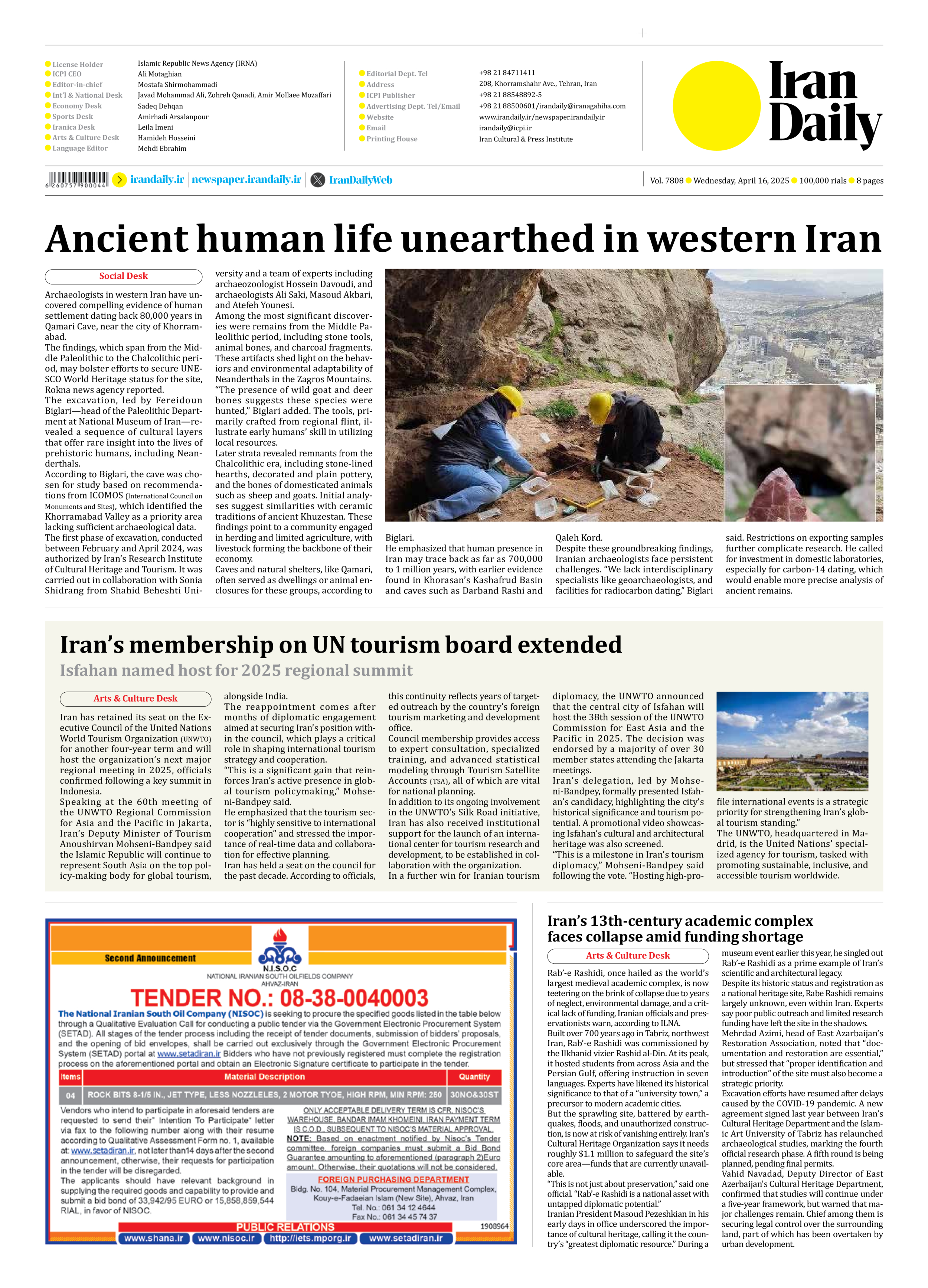
Iran’s 13th-century academic complex faces collapse amid funding shortage
Rab’-e Rashidi, once hailed as the world’s largest medieval academic complex, is now teetering on the brink of collapse due to years of neglect, environmental damage, and a critical lack of funding, Iranian officials and preservationists warn, according to ILNA.
Built over 700 years ago in Tabriz, northwest Iran, Rab’-e Rashidi was commissioned by the Ilkhanid vizier Rashid al-Din. At its peak, it hosted students from across Asia and the Persian Gulf, offering instruction in seven languages. Experts have likened its historical significance to that of a “university town,” a precursor to modern academic cities.
But the sprawling site, battered by earthquakes, floods, and unauthorized construction, is now at risk of vanishing entirely. Iran’s Cultural Heritage Organization says it needs roughly $1.1 million to safeguard the site’s core area—funds that are currently unavailable.
“This is not just about preservation,” said one official. “Rab’-e Rashidi is a national asset with untapped diplomatic potential.”
Iranian President Masoud Pezeshkian in his early days in office underscored the importance of cultural heritage, calling it the country’s “greatest diplomatic resource.” During a museum event earlier this year, he singled out Rab’-e Rashidi as a prime example of Iran’s scientific and architectural legacy.
Despite its historic status and registration as a national heritage site, Rabe Rashidi remains largely unknown, even within Iran. Experts say poor public outreach and limited research funding have left the site in the shadows.
Mehrdad Azimi, head of East Azarbaijan’s Restoration Association, noted that “documentation and restoration are essential,” but stressed that “proper identification and introduction” of the site must also become a strategic priority.
Excavation efforts have resumed after delays caused by the COVID-19 pandemic. A new agreement signed last year between Iran’s Cultural Heritage Department and the Islamic Art University of Tabriz has relaunched archaeological studies, marking the fourth official research phase. A fifth round is being planned, pending final permits.
Vahid Navadad, Deputy Director of East Azerbaijan’s Cultural Heritage Department, confirmed that studies will continue under a five-year framework, but warned that major challenges remain. Chief among them is securing legal control over the surrounding land, part of which has been overtaken by urban development.







